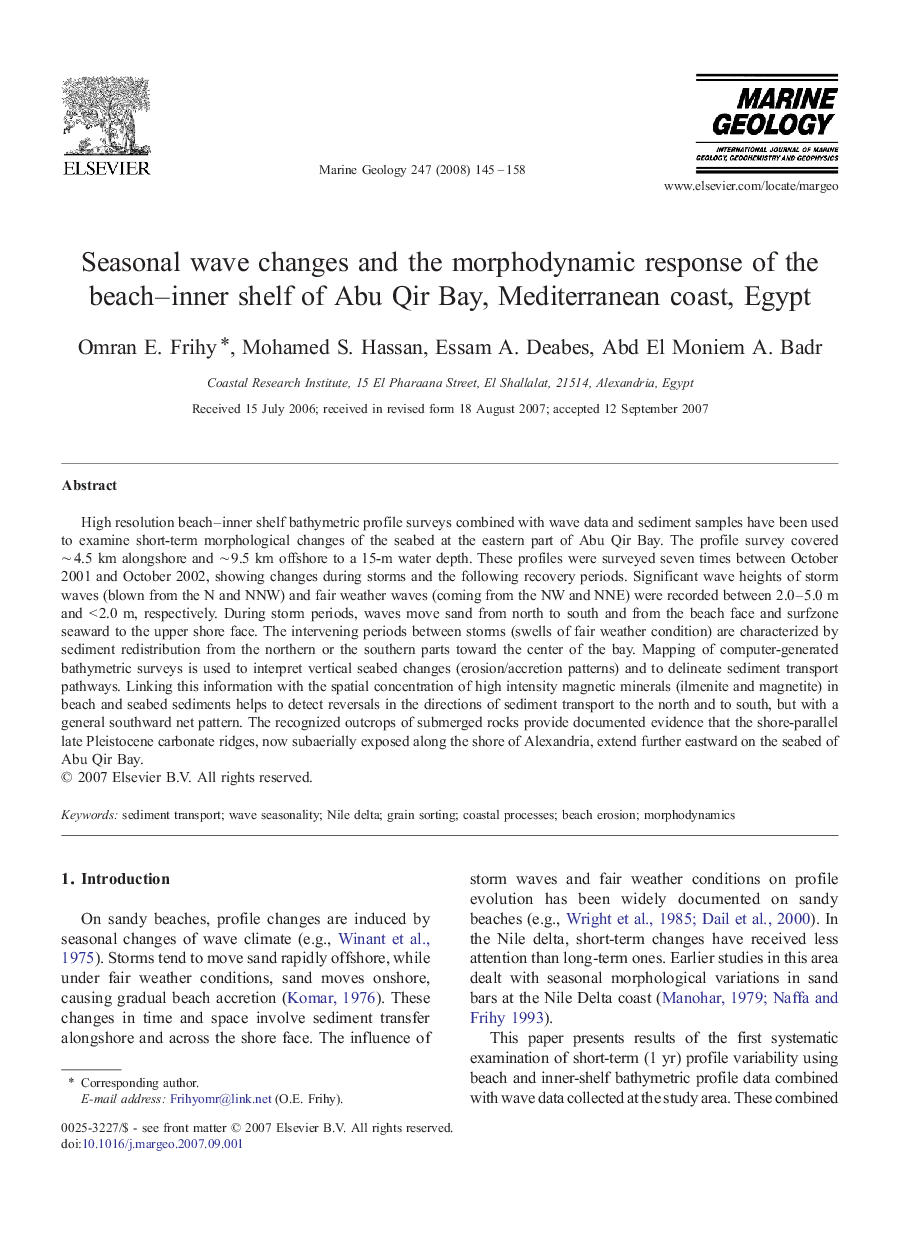| Article ID | Journal | Published Year | Pages | File Type |
|---|---|---|---|---|
| 4719403 | Marine Geology | 2008 | 14 Pages |
High resolution beach–inner shelf bathymetric profile surveys combined with wave data and sediment samples have been used to examine short-term morphological changes of the seabed at the eastern part of Abu Qir Bay. The profile survey covered ∼ 4.5 km alongshore and ∼ 9.5 km offshore to a 15-m water depth. These profiles were surveyed seven times between October 2001 and October 2002, showing changes during storms and the following recovery periods. Significant wave heights of storm waves (blown from the N and NNW) and fair weather waves (coming from the NW and NNE) were recorded between 2.0–5.0 m and < 2.0 m, respectively. During storm periods, waves move sand from north to south and from the beach face and surfzone seaward to the upper shore face. The intervening periods between storms (swells of fair weather condition) are characterized by sediment redistribution from the northern or the southern parts toward the center of the bay. Mapping of computer-generated bathymetric surveys is used to interpret vertical seabed changes (erosion/accretion patterns) and to delineate sediment transport pathways. Linking this information with the spatial concentration of high intensity magnetic minerals (ilmenite and magnetite) in beach and seabed sediments helps to detect reversals in the directions of sediment transport to the north and to south, but with a general southward net pattern. The recognized outcrops of submerged rocks provide documented evidence that the shore-parallel late Pleistocene carbonate ridges, now subaerially exposed along the shore of Alexandria, extend further eastward on the seabed of Abu Qir Bay.
